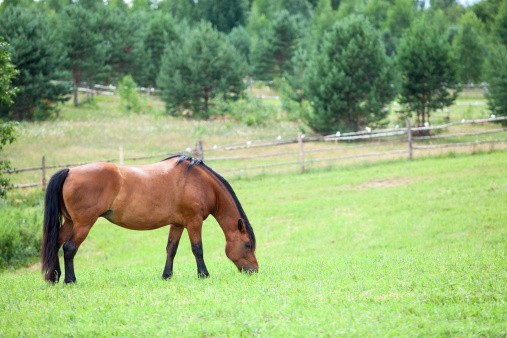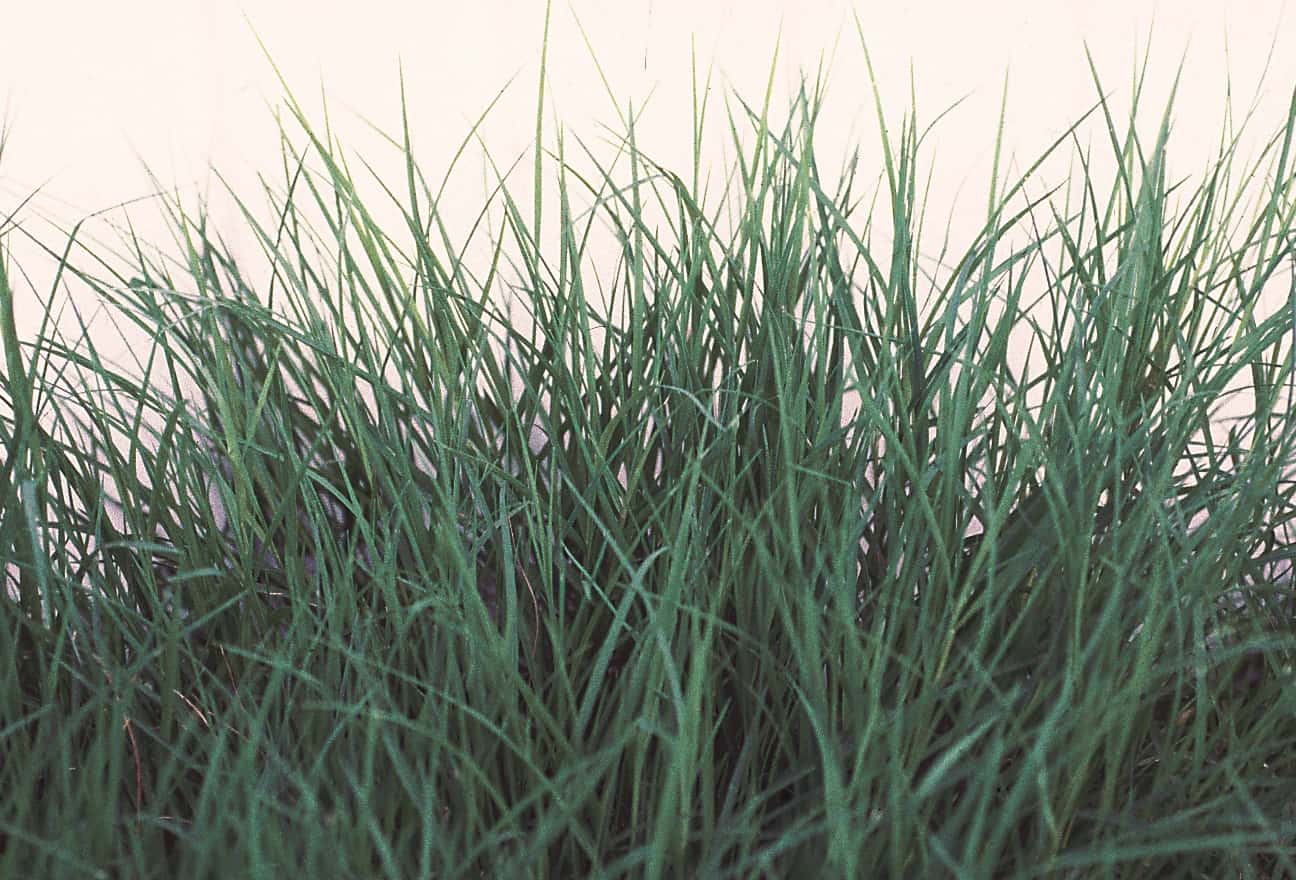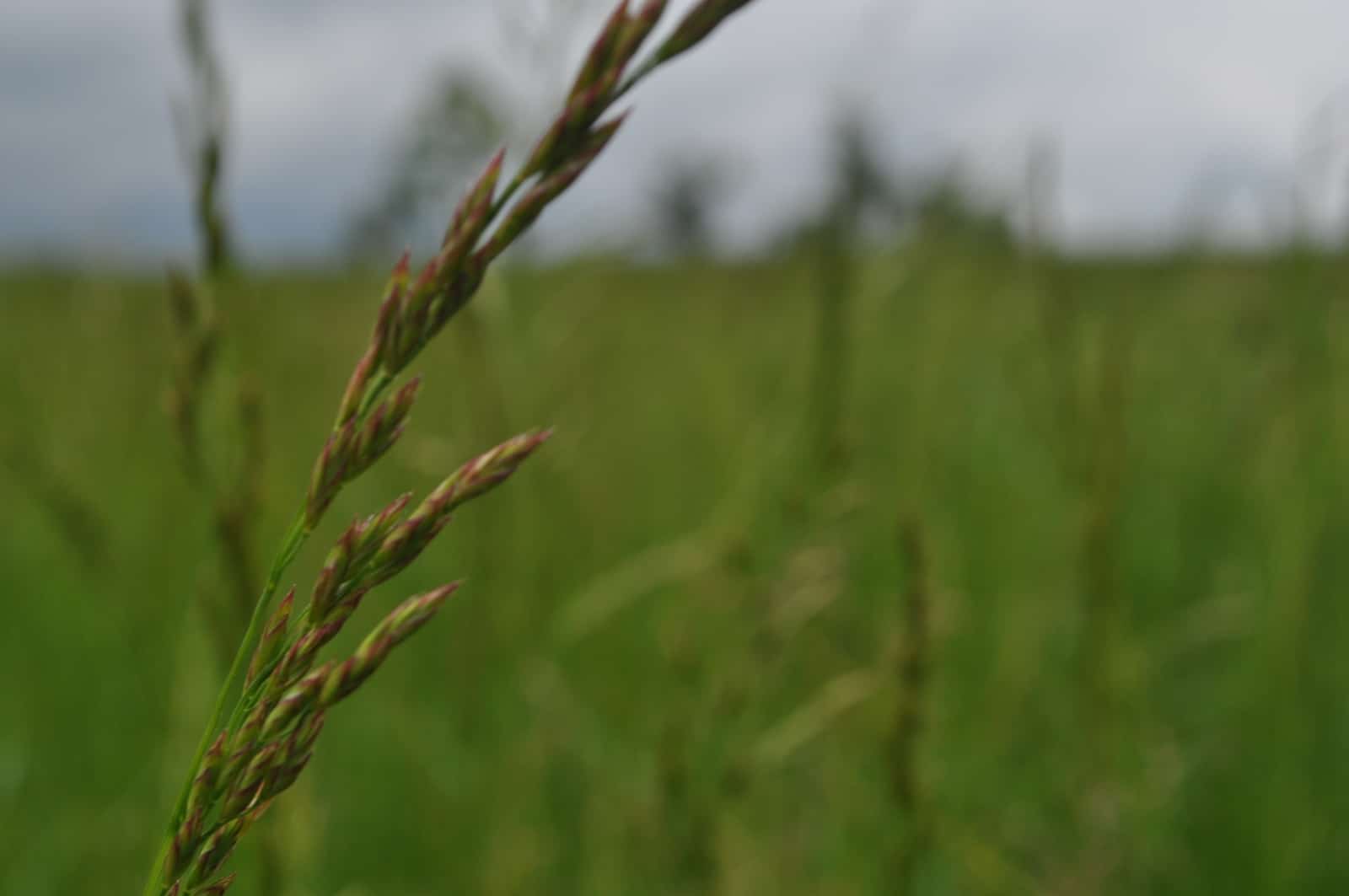Pasture Management 101: Grass Species

To maintain proper gut health, veterinarians and nutritionists generally recommend that horses should eat at least 2% of their body weight (on a dry matter basis) in forage per day. For a 1,000-pound horse, that’s approximately 20 to 25 pounds of dry matter per day. For many horses, pasture grasses are an important part of this equation.
In many cases, horses’ nutritional needs are met when they consume this amount of good-quality forage.
“This is why many equine nutritionists and professionals will often state, ‘Horses can be maintained on forage alone,'” said Jennie Ivey, MS, PhD, assistant professor and extension equine specialist at the University of Tennessee Institute of Agriculture, “In some instances, horses can be maintained on forage alone even though their level of exercise intensity can be rated as light to moderate.”
With this in mind, what pasture grasses should you have?
Grasses should be the primary forage in horse pastures, because they’re typically more persistent and productive than legumes.
“Grasses are divided into cool (growth from March until June and September until November) and warm (growth from June to October) season categories based on their growth seasons, which is an important consideration for horse owners to keep in mind,” Ivey said.
In some regions, pastures can provide nutrition for horses throughout most of the year. Thus, a mixture of cool- and warm-season grasses (along with legumes, in certain instances) is ideal.

Bermudagrass is a warm-season grass that horses can safely eat. Other warm-season grass species that horse owners might consider feeding include dallisgrass, pearl millet, and crab grass. Examples of cool-season perennial grasses used for pastures or hay include orchardgrass, timothy, and Kentucky bluegrass; cool-season annual options include wheat, rye, ryegrass, and oats.
Dewitt Simerly, a district conservationist with the United State’s Department of Agriculture’s Natural Resources and Conservation Service, said he recommends bermudagrass, endophyte-free tall fescue (more on this in a moment), and orchardgrass to horse owners who consult him regarding acceptable combinations for pastures.

Endophyte-infected tall fescue is another forage that’s abundant in some areas of the country. While it’s persistent and can handle various environmental stressors, including drought and overgrazing, it’s been implicated as a cause of a condition called fescue toxicosis. A microscopic endophyte (a fungus that lives inside the fescue) called Neotyphodium coenophialum produces ergot alkaloids (namely ergovaline) that can cause a number of problems in late-term broodmares, including late-term abortion, thickened or retained placenta (potentially leading to laminitis), difficulty rebreeding, little to no milk production, and a decrease in colostrum production.
“Pregnant mares should be removed from endophyte-infected tall fescue pasture for the last 60-90 days of pregnancy and provided an alternate forage source,” Ivey said.
Endophyte-free tall fescue is available, as is a recently developed variety containing a novel endophyte that does not produce the ergot alkaloids that cause fescue toxicosis. The active alkaloids make it drought tolerant, insect resistant, and more vigorous without being toxic to horses.
Written by:
Hope Ellis-Ashburn, MS
Related Articles
Stay on top of the most recent Horse Health news with












